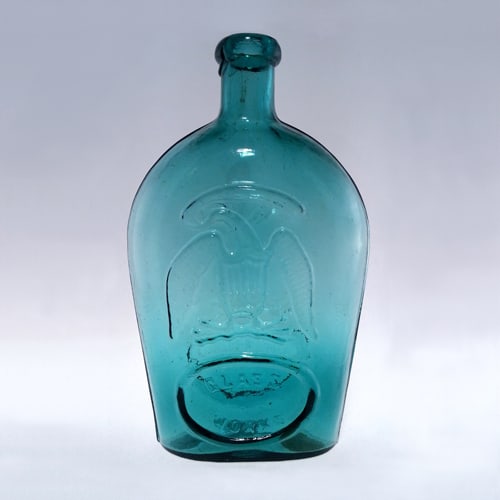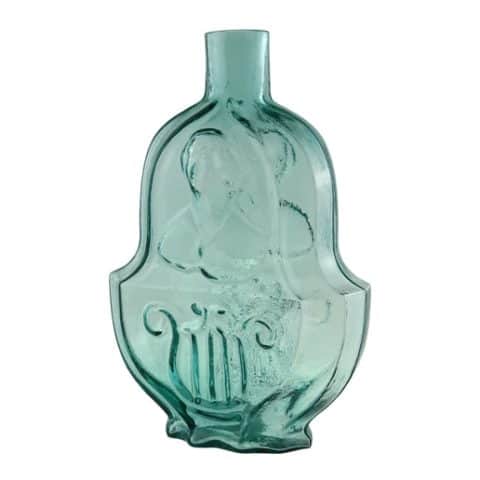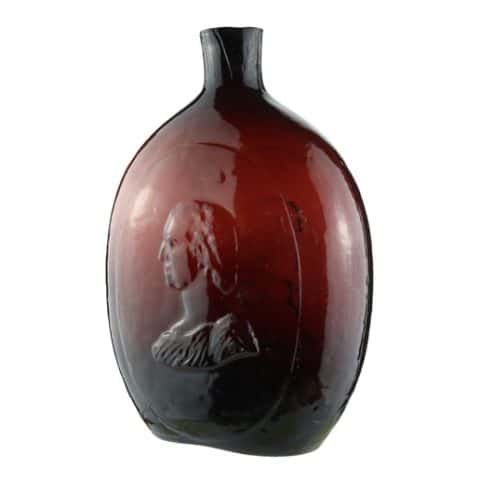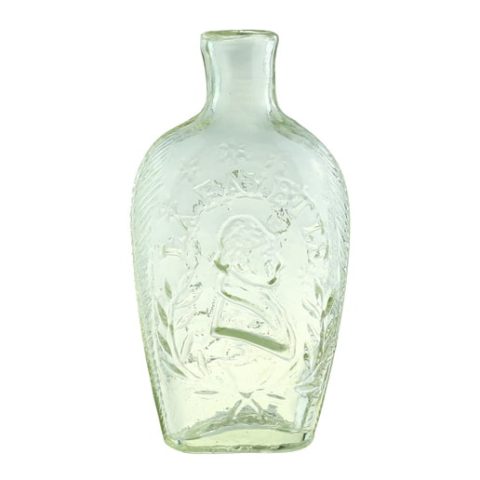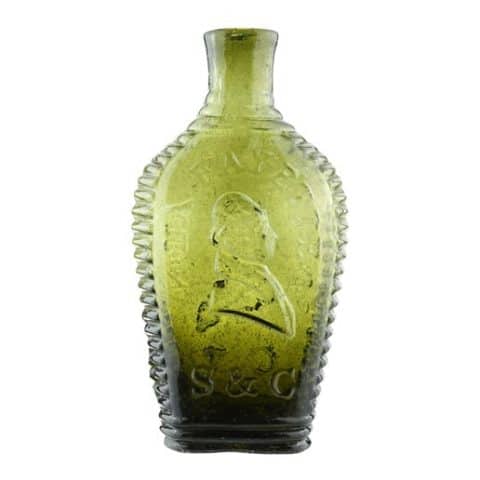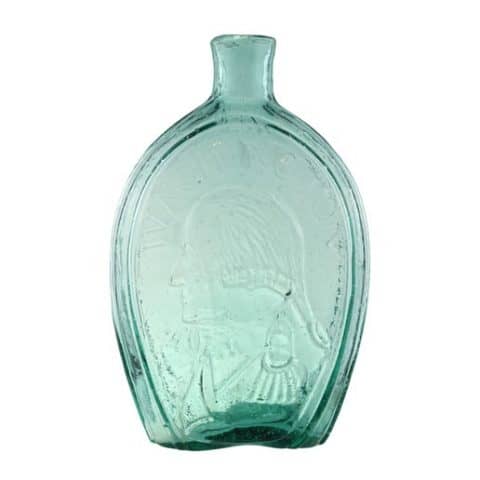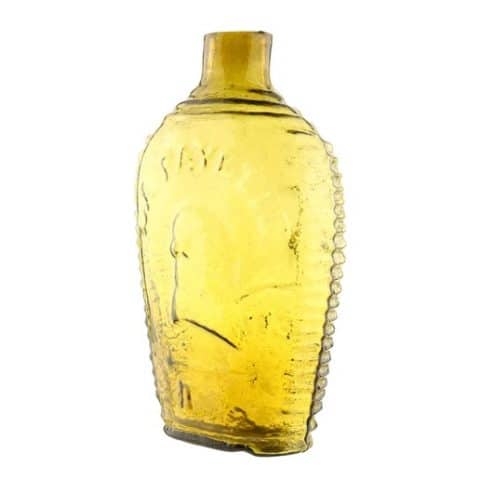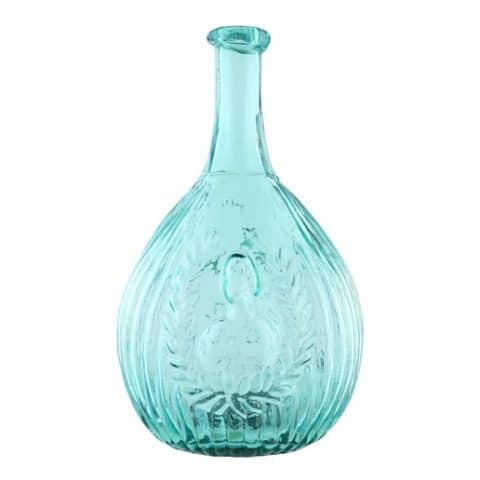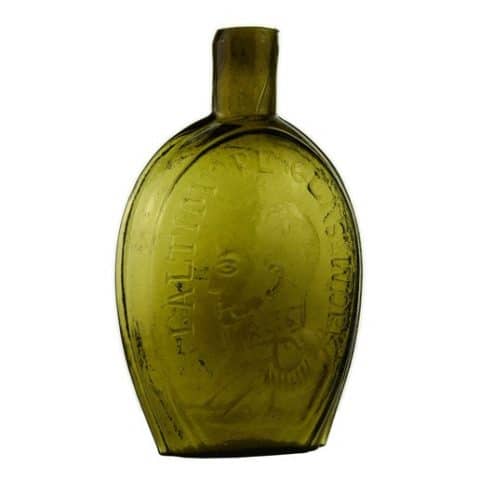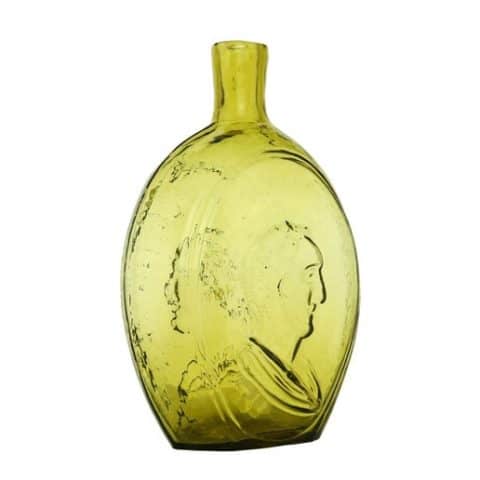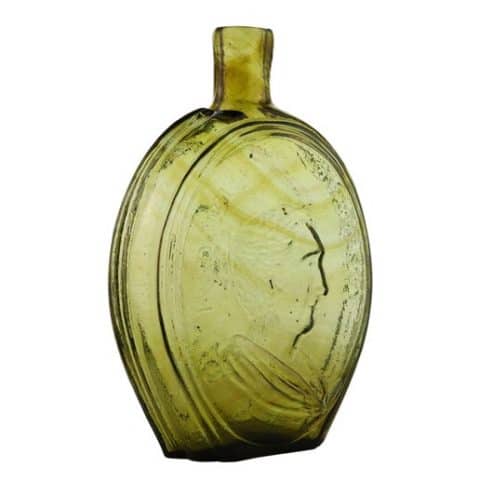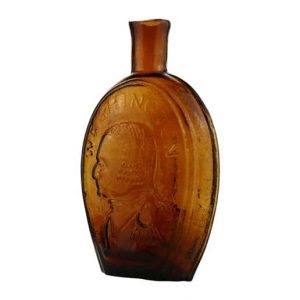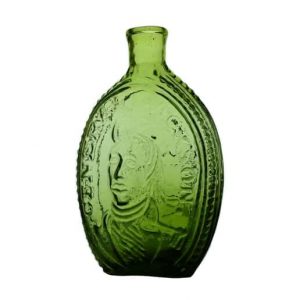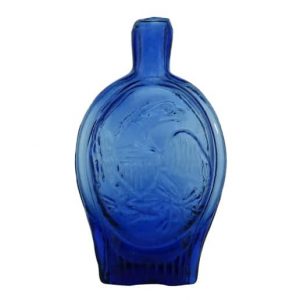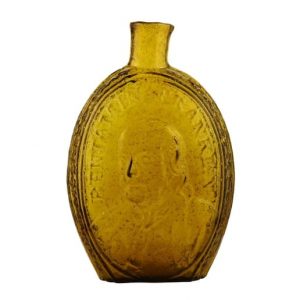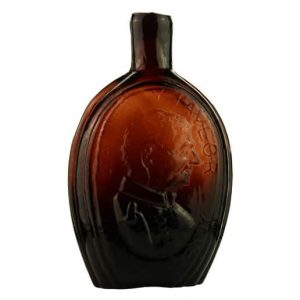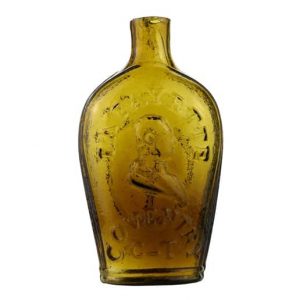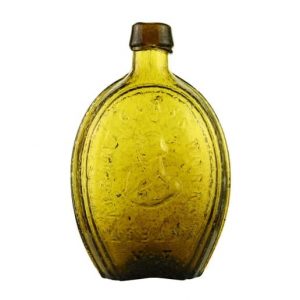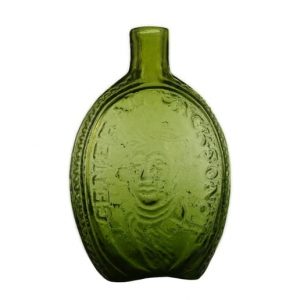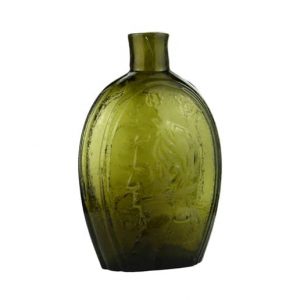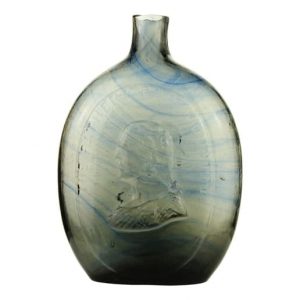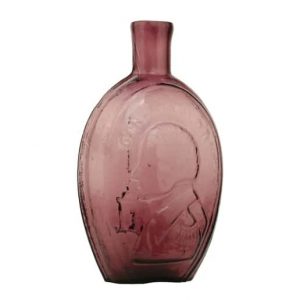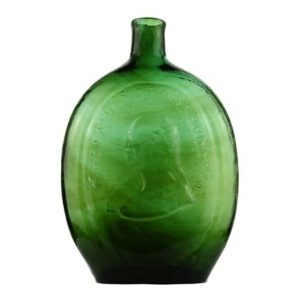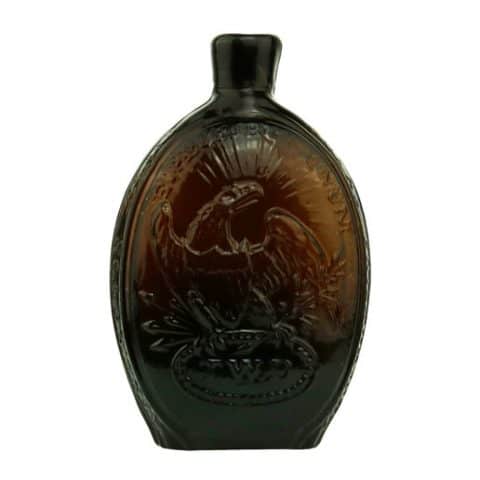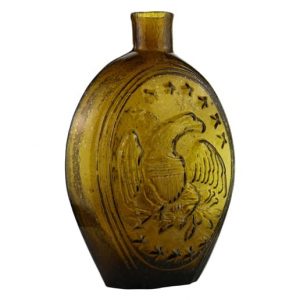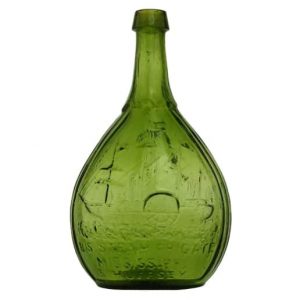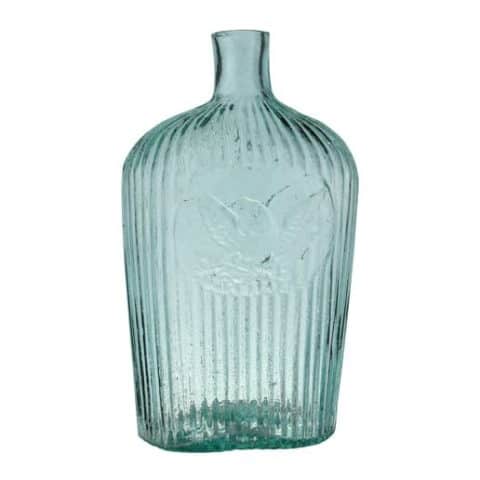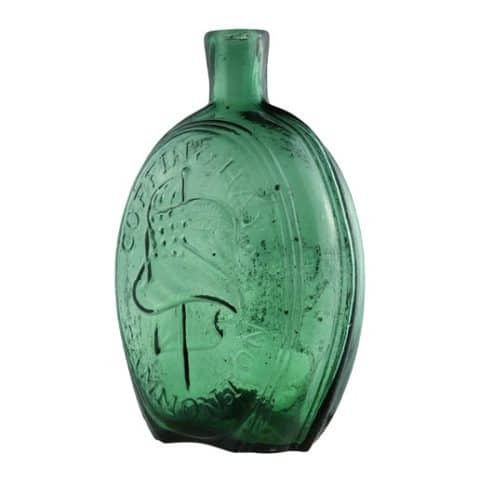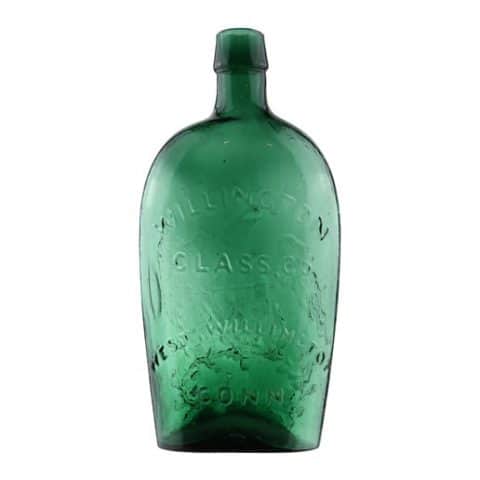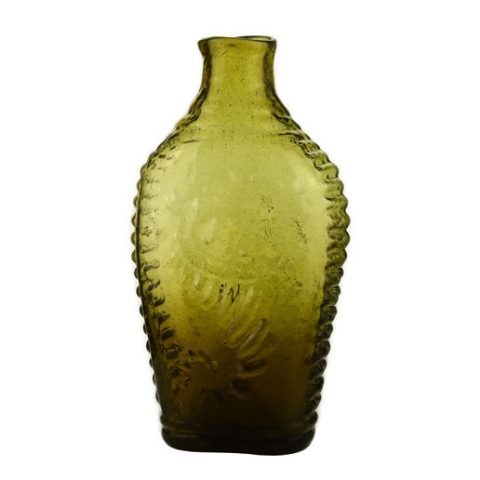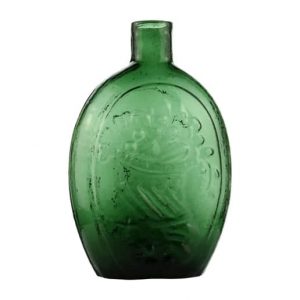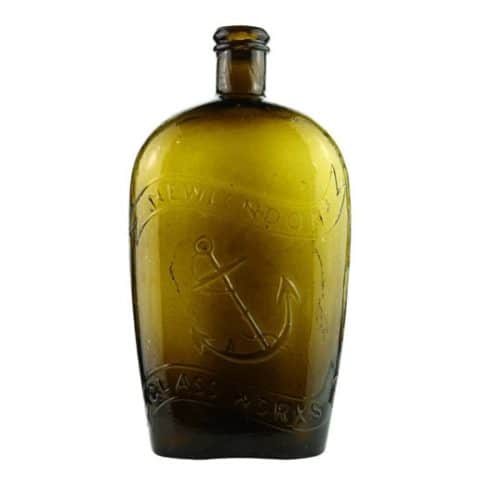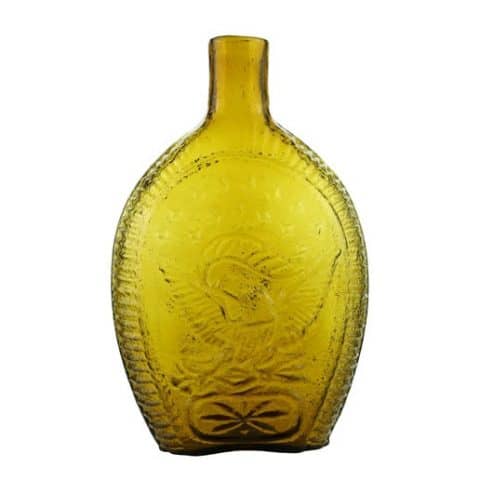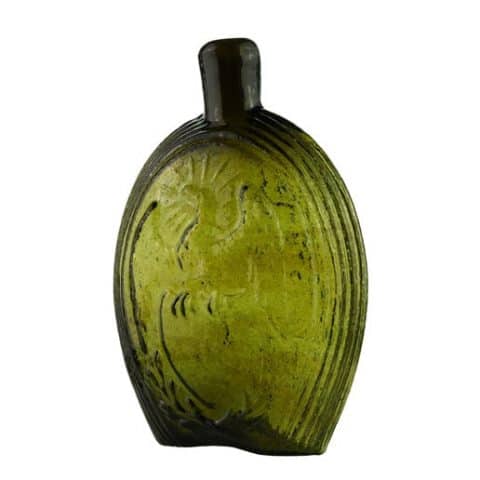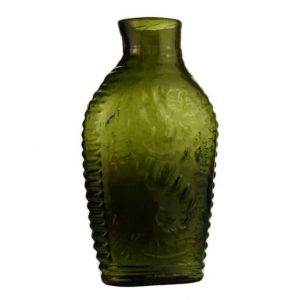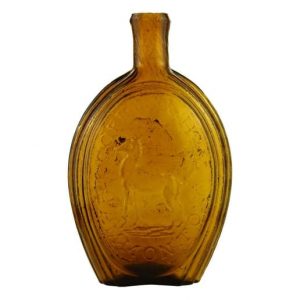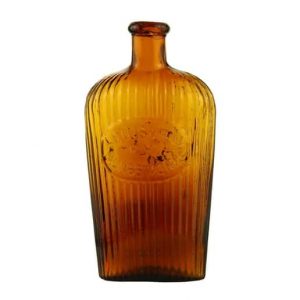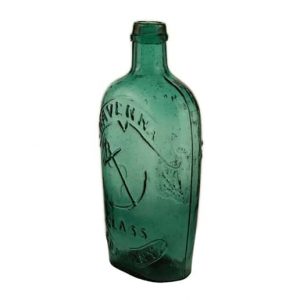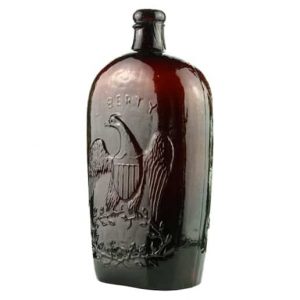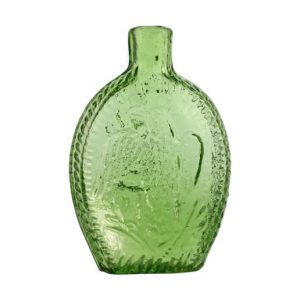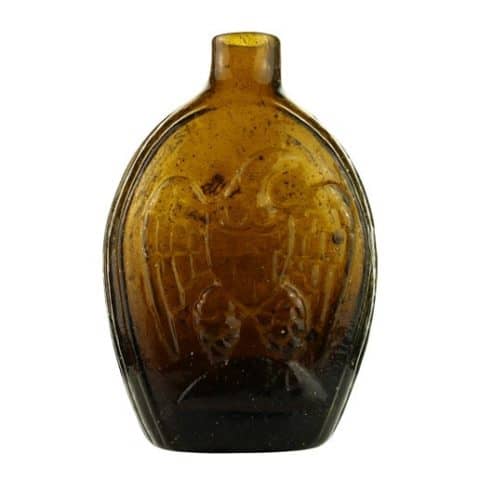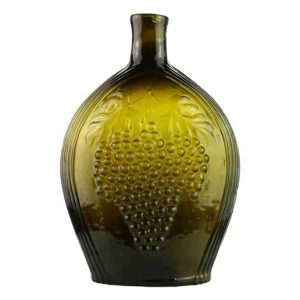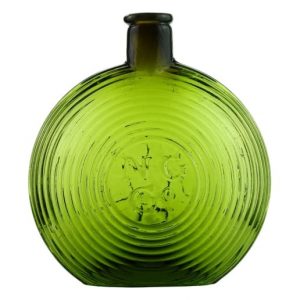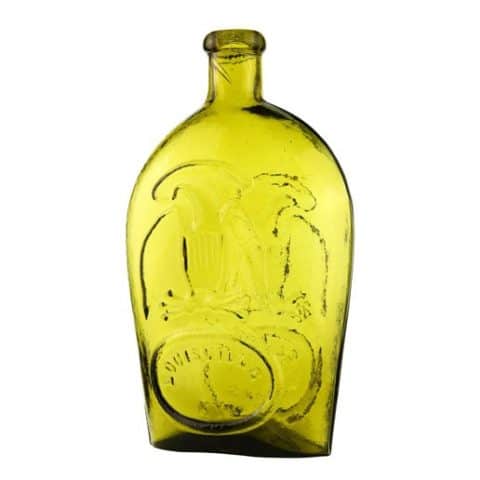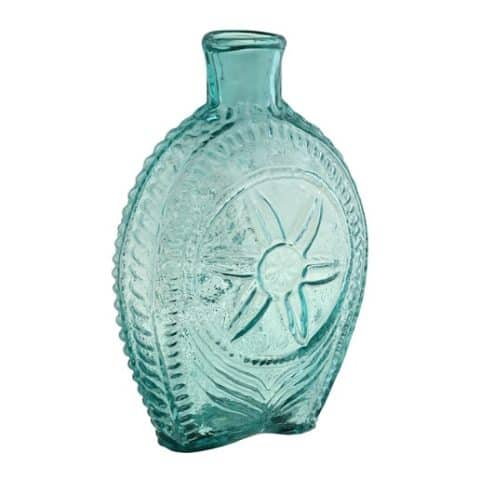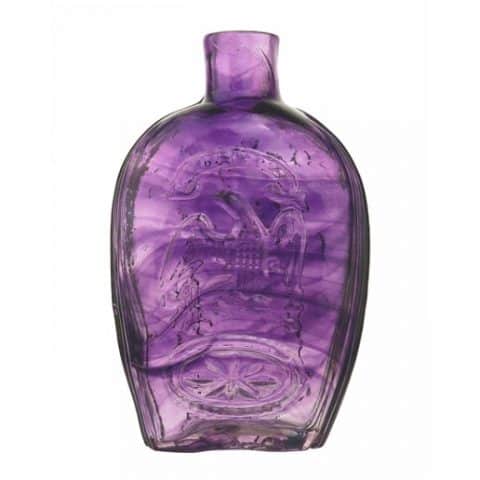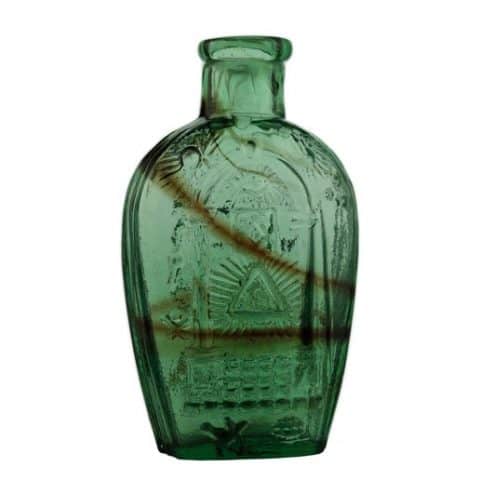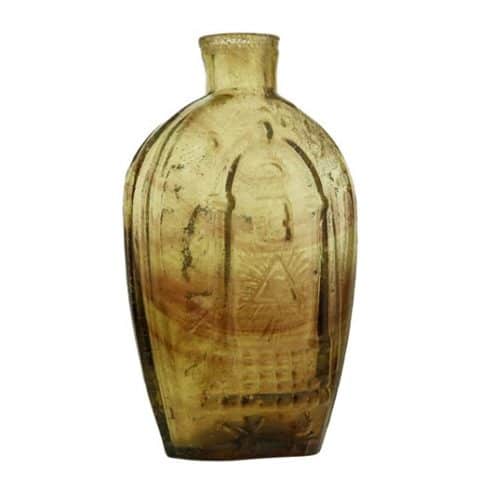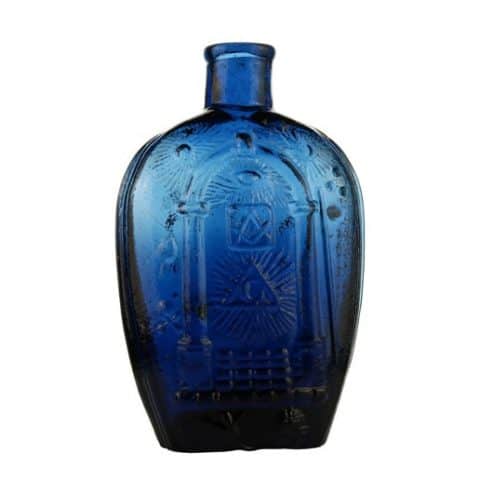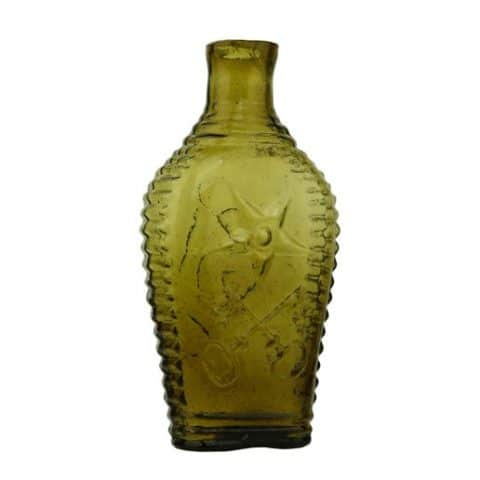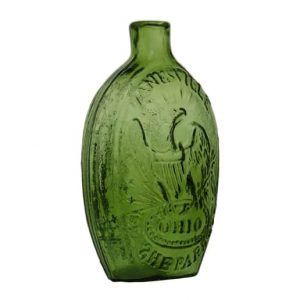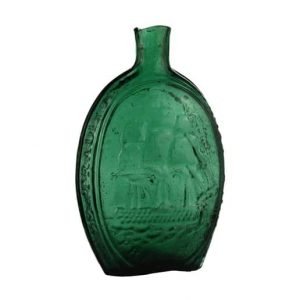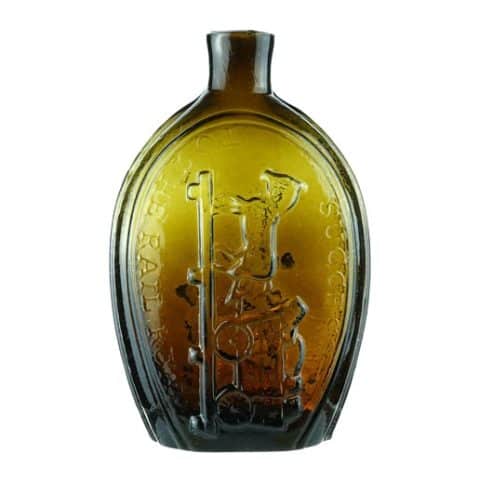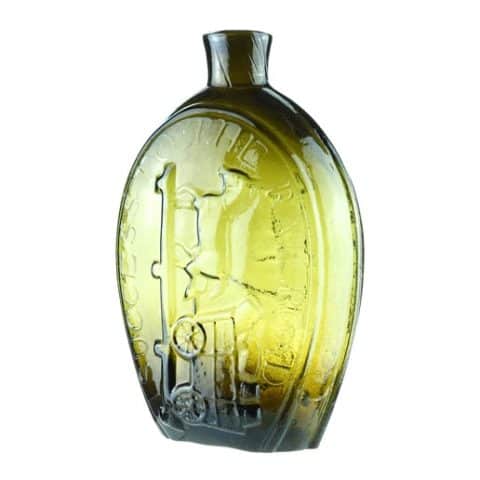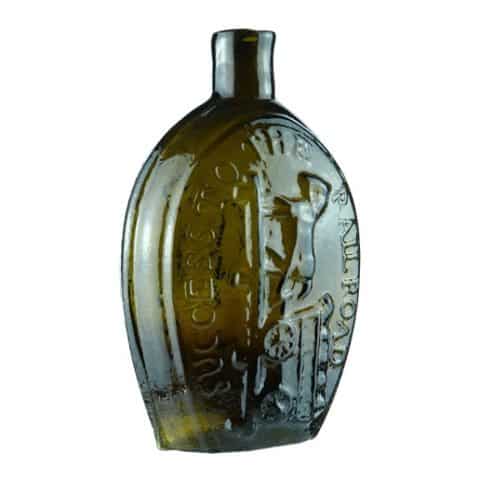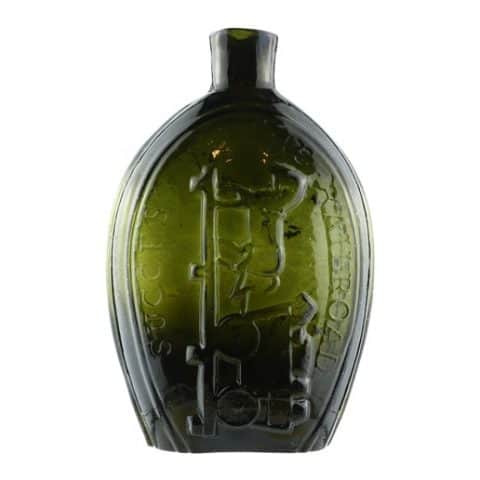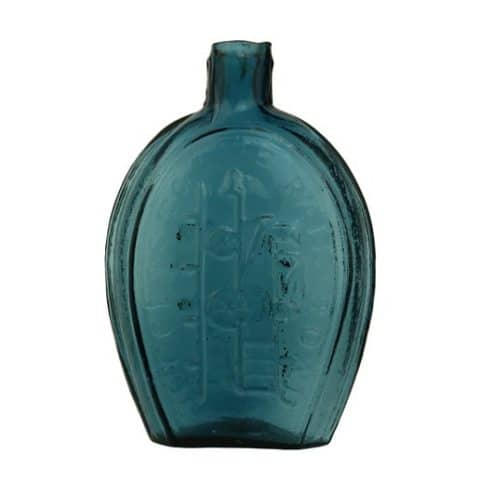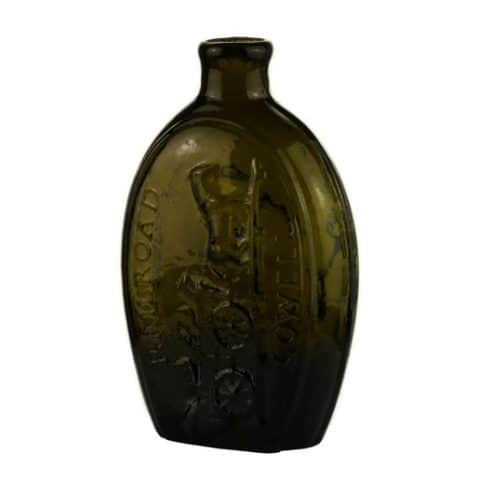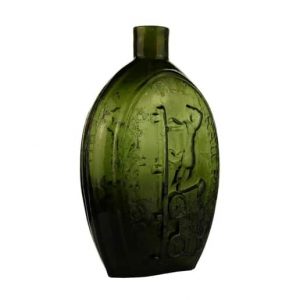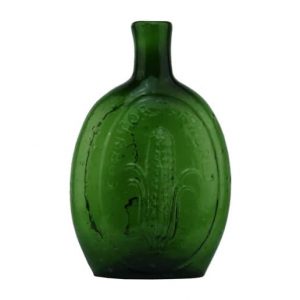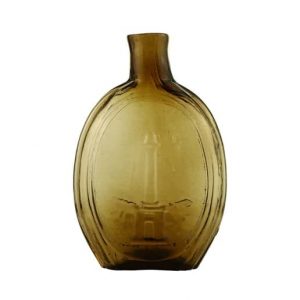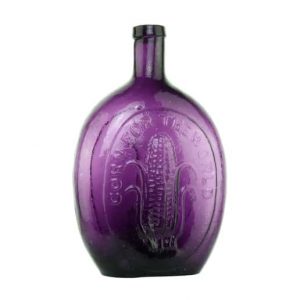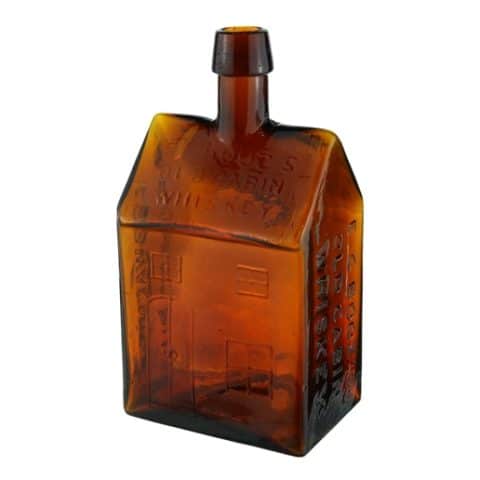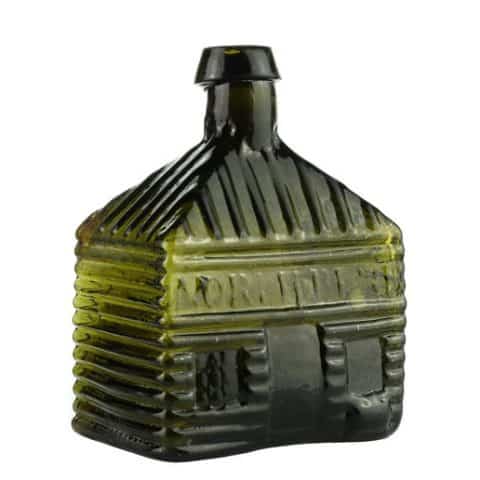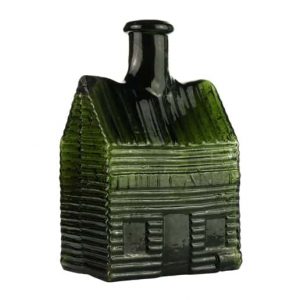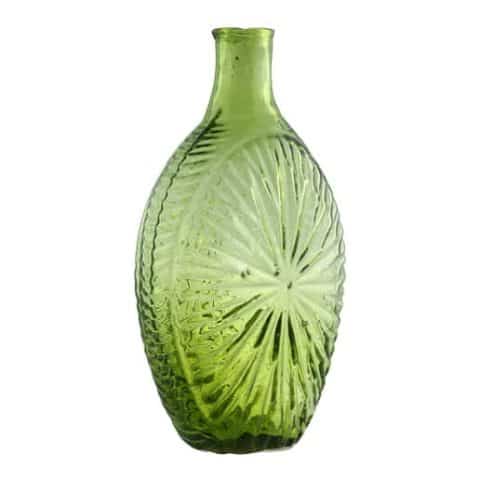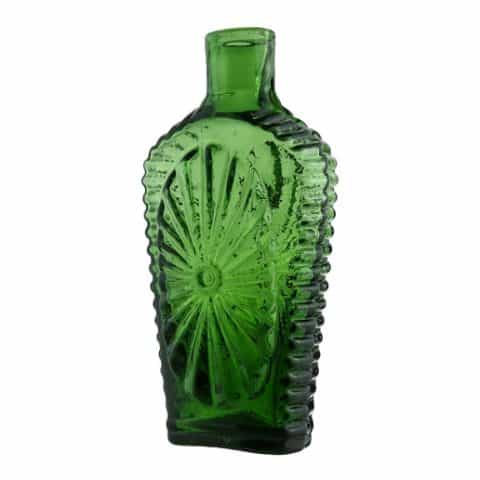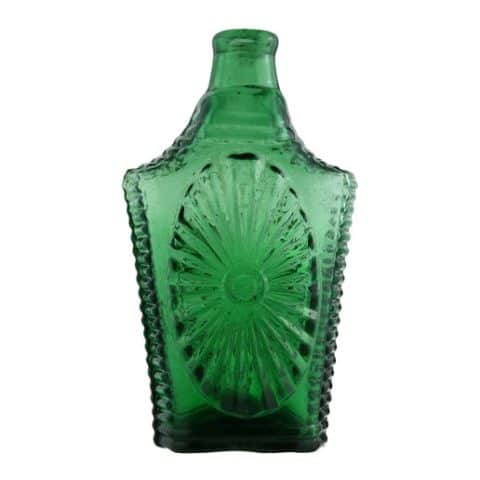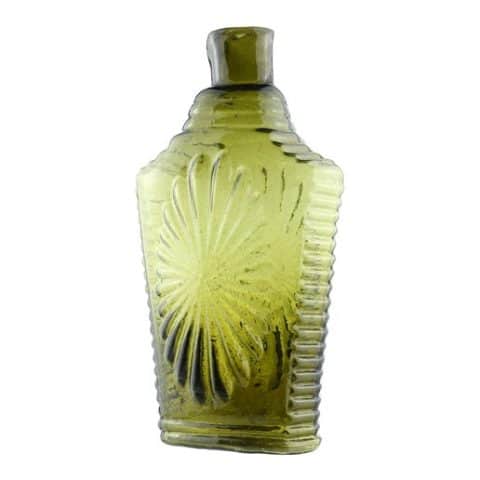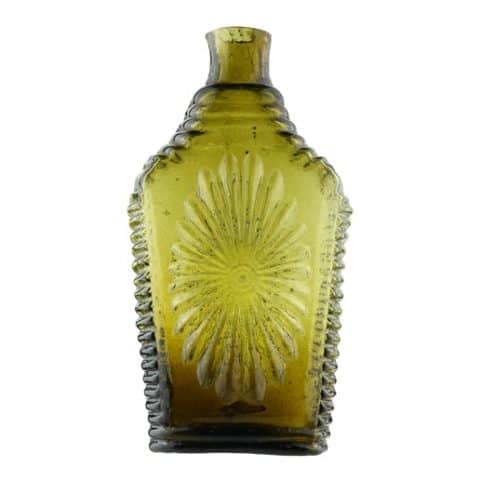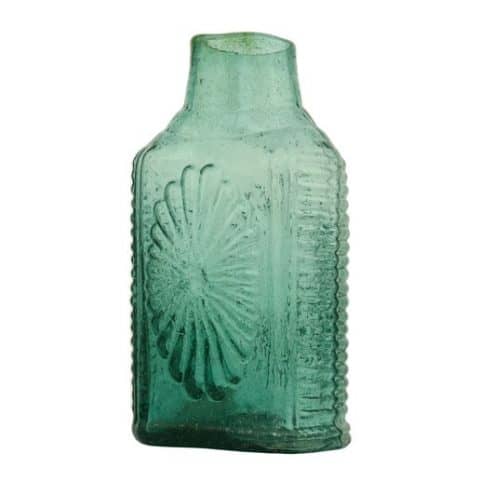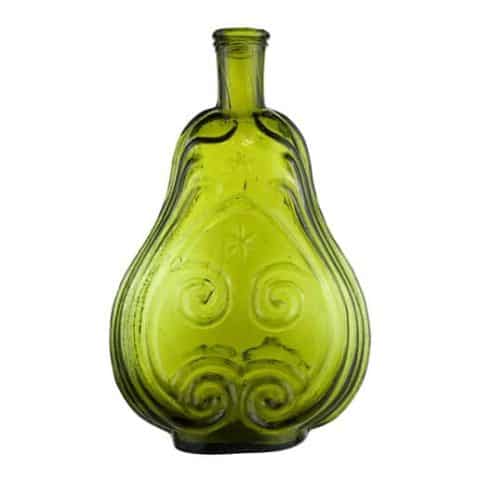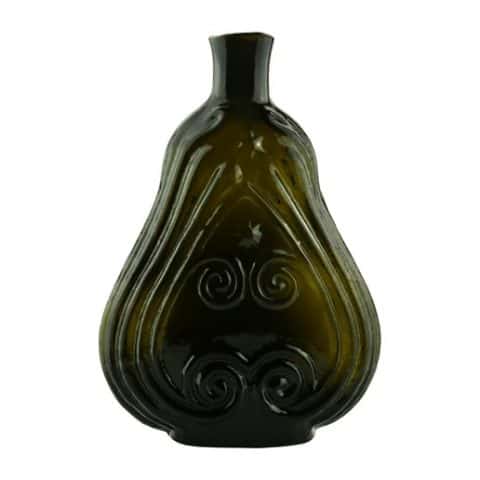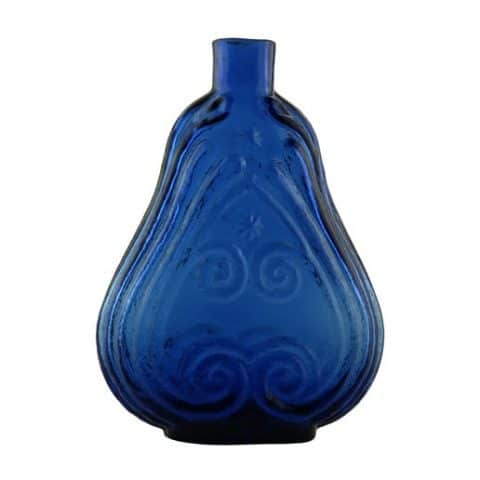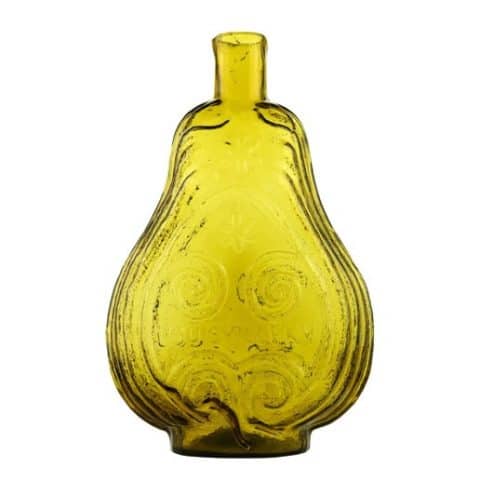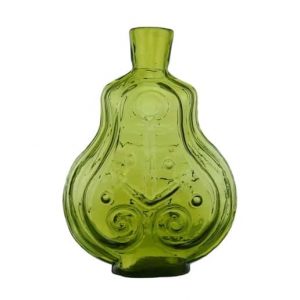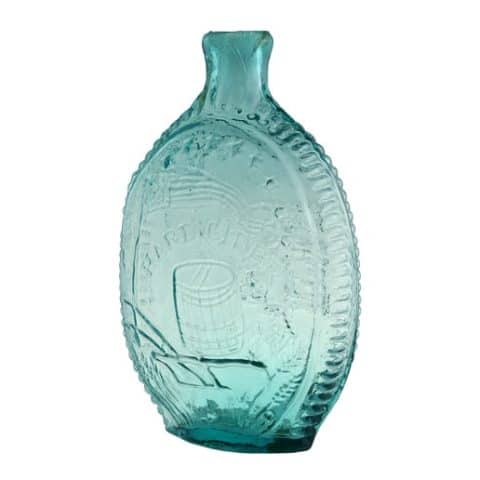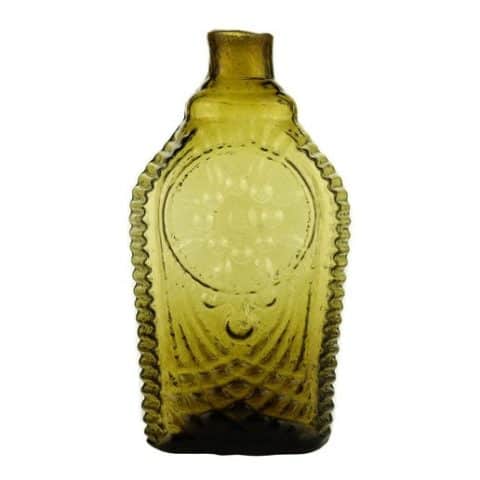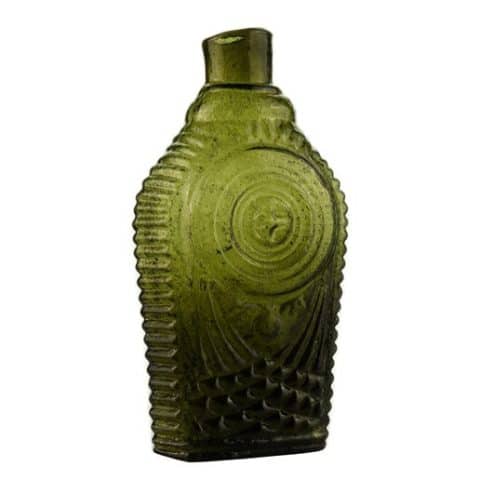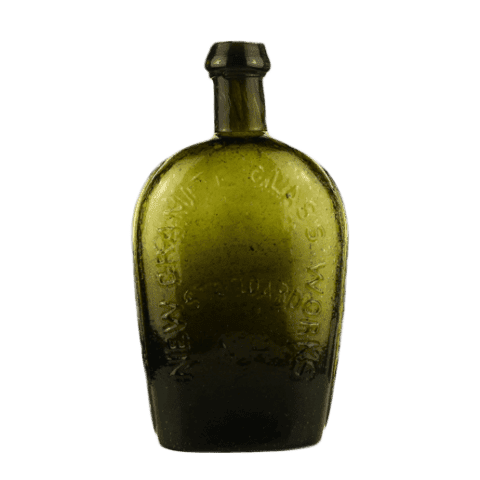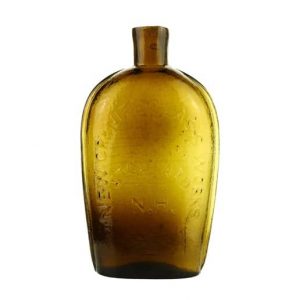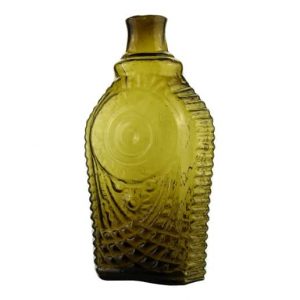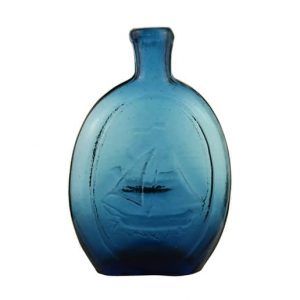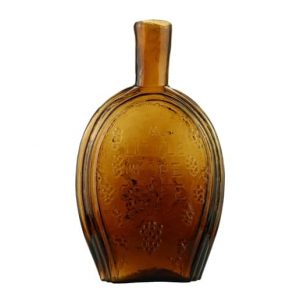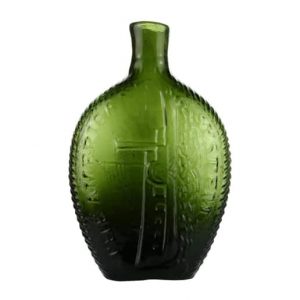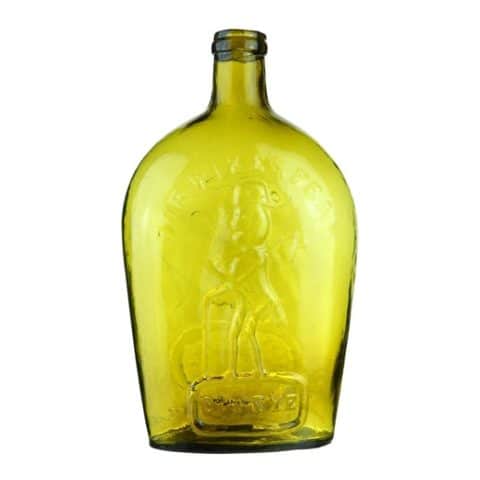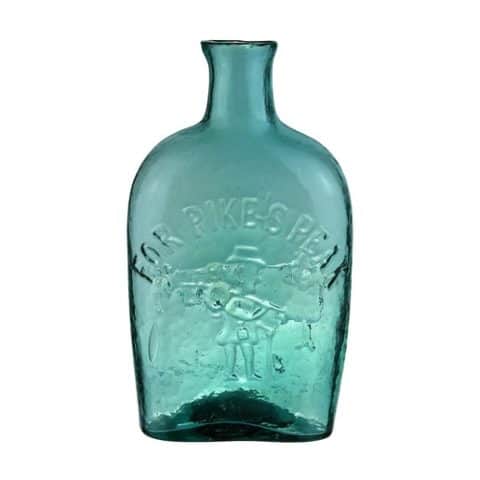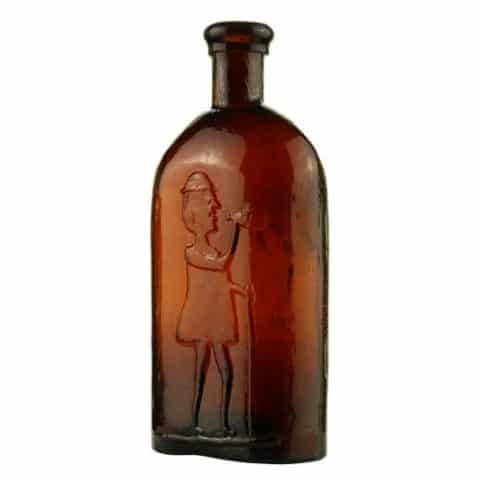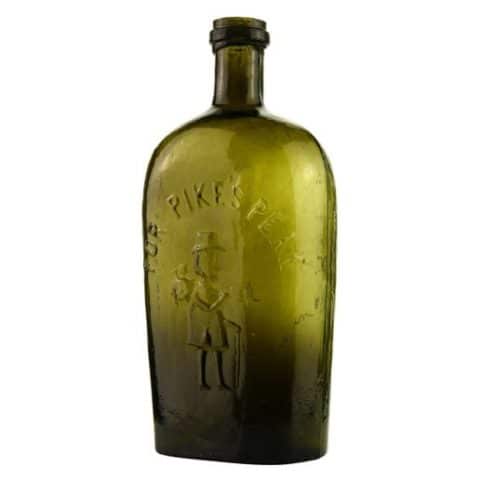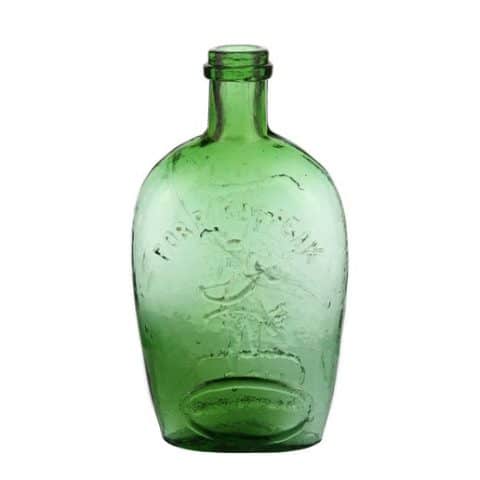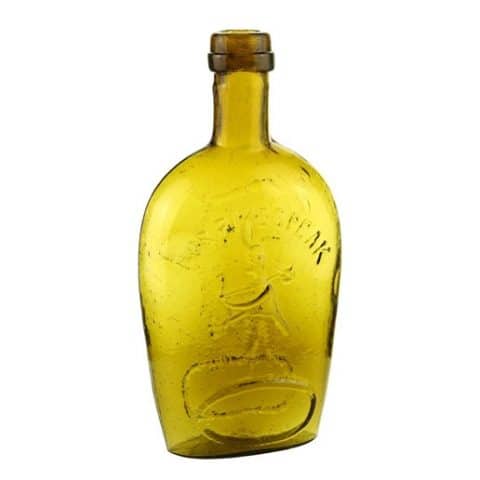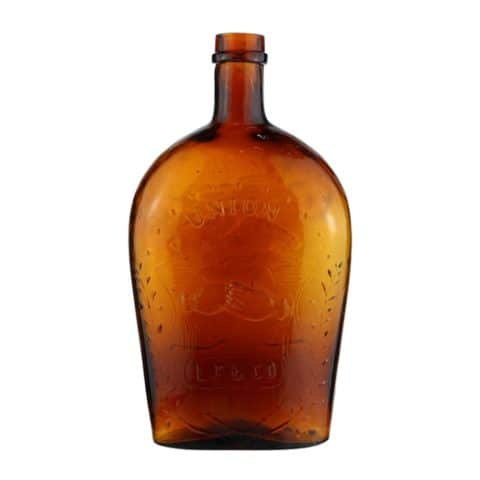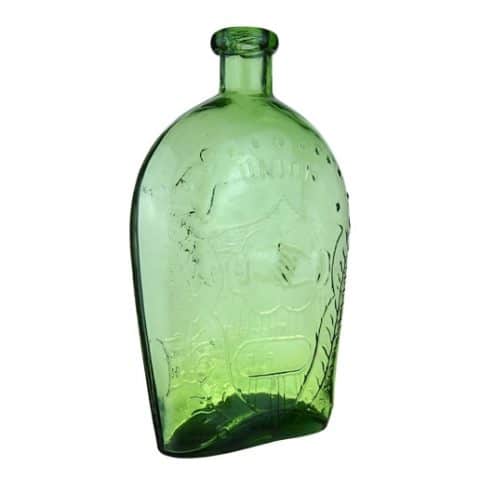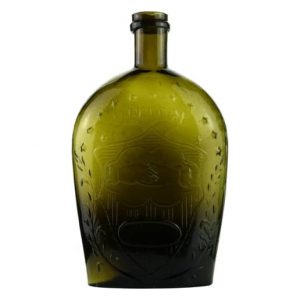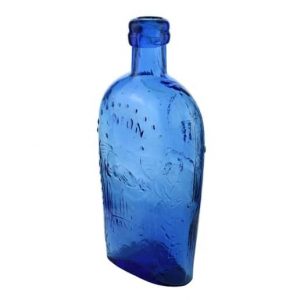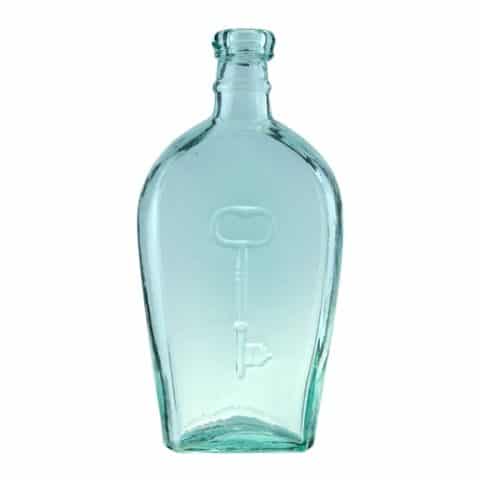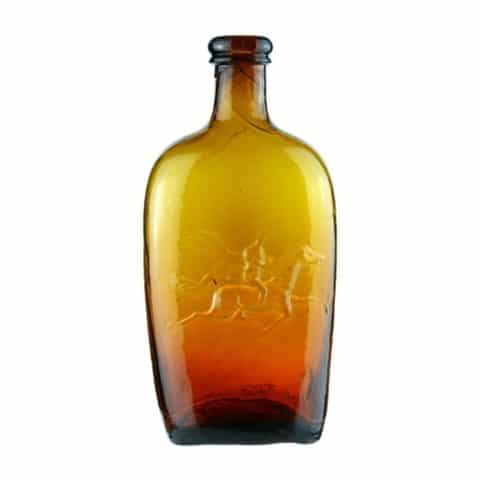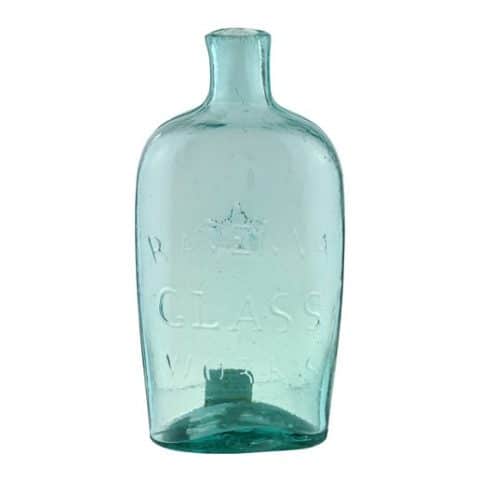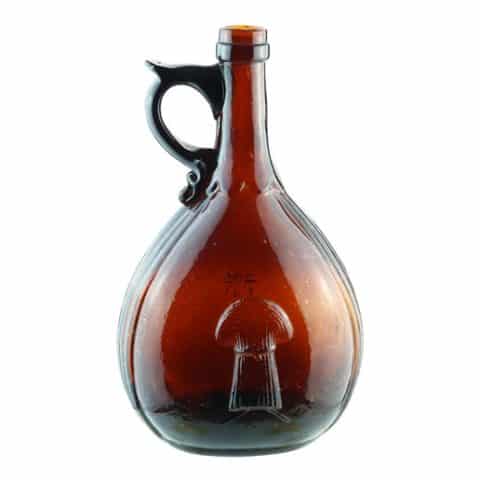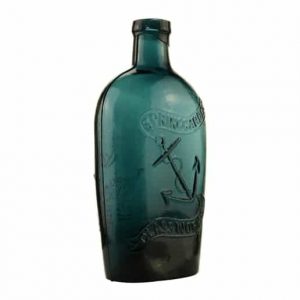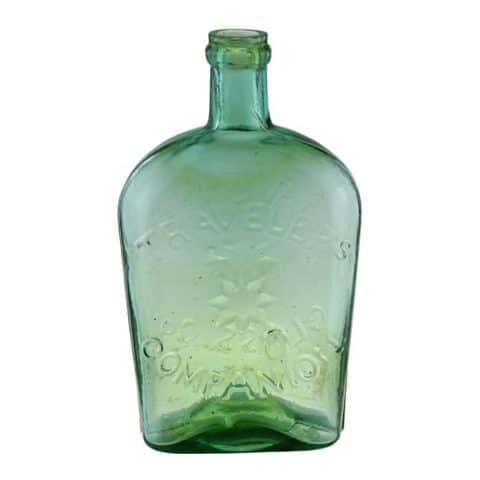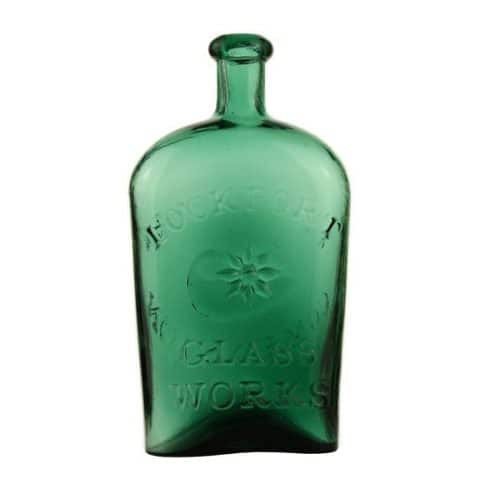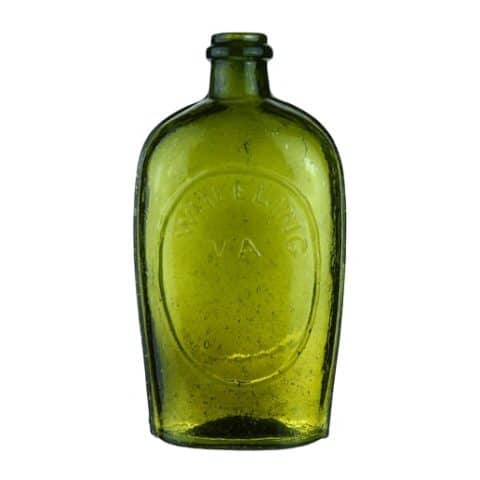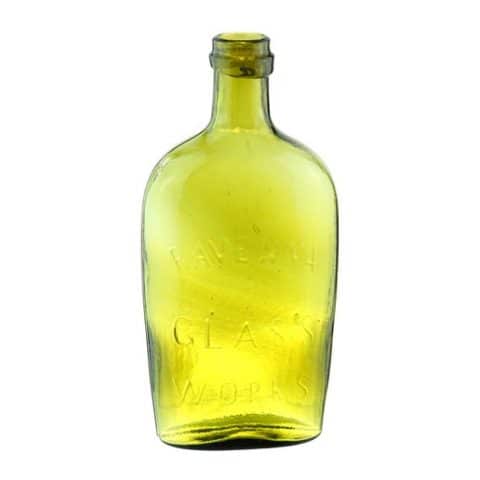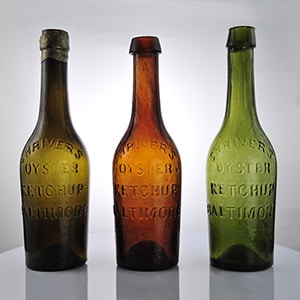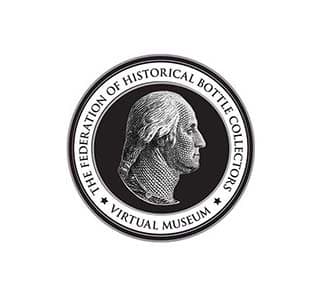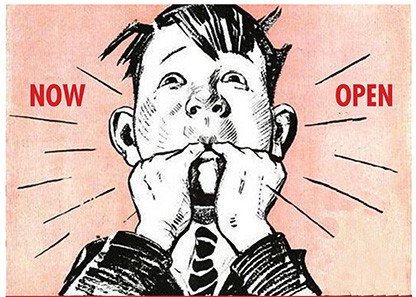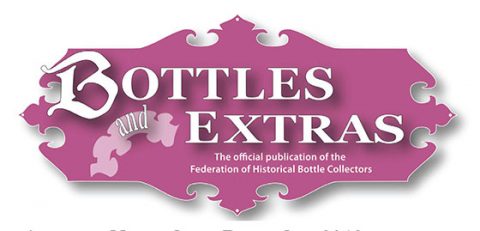GII-114 Double Eagle Louisville Glass Works
GII – 114
Double Eagle
Louisville KY
Glass Works
Louisville Glass Works, Louisville, Kentucky
Olive-Yellow Quart
Provenance: Anonymous
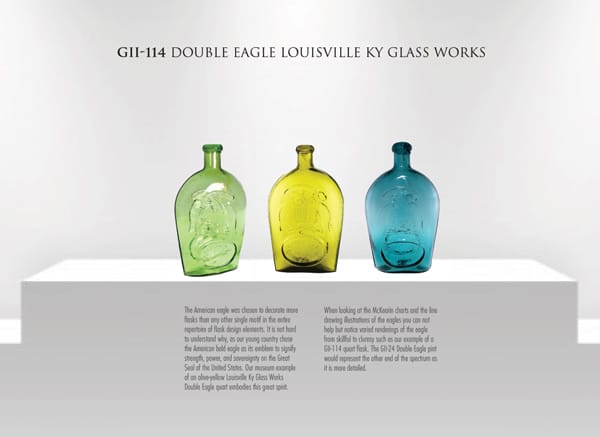
The American eagle was chosen to decorate more flasks than any other single motif in the entire repertoire of flask design elements. It is not hard to understand why, as our young country chose the American bald eagle as its emblem to signify strength, power, and sovereignty on the Great Seal of the United States. Our museum example of an olive-yellow “Louisville Ky Glass Works Double Eagle” quart embodies this great spirit.
When looking at the McKearin charts and the line drawing illustrations of the eagles you can not help but notice varied renderings of the eagle from skillful to clumsy such as our example of a GII-114 quart flask. The GII-24 Double Eagle pint would represent the other end of the spectrum as it is much more detailed.
Our museum flask displays a crude embossed eagle facing to the left on what is considered the primary face of the flask. The eagle has a small head with a long neck. The wings are partly raised and spread downward and outward. There are seventeen ribs in the left wing and fifteen ribs in the right wing. A narrow, round-ended ribbon extends from the beak to the right in a shallow arc above the head. The breast shield has five vertical bars. The eagle has very short legs and no bottom line. There are three, not well-defined arrows or thunderbolts in each talon. Below the eagle is an embossed oval frame with ‘LOUISVILLE’ embossed following the inside top curve of the oval and ‘KY’ embossed inside the oval at the center bottom.
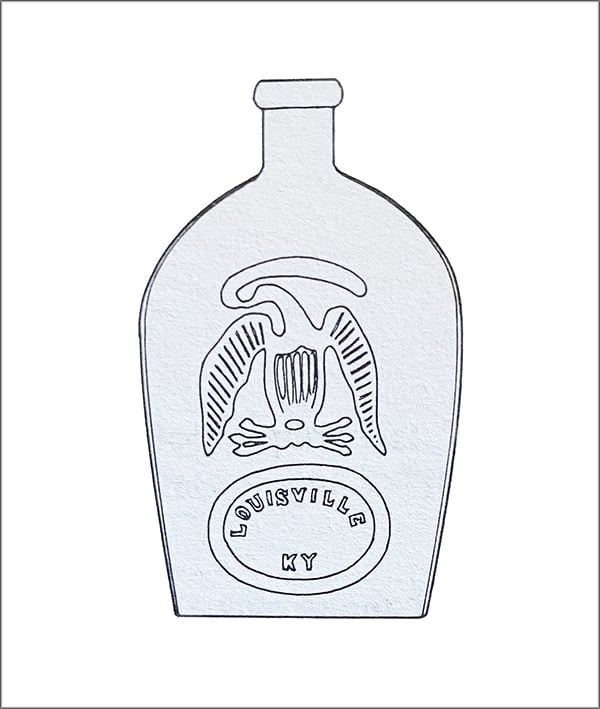
The reverse of the flask is like the obverse with the right wing having twenty ribs. McKearin’s doesn’t indicate a change in the left wing of the reverse (seventeen ribs), but flask authority Mark Vuono reports only fifteen ribs on the left wing on his example. The embossed copy ‘GLASS’ is at the top and the embossed copy ‘WORKS’ is at the bottom, both inside the oval frame.
The flask can be found with either a tooled lip, a rounded rolled-over collar lip, or a tooled narrow ring below a thickened plain lip. The flask edge has a narrow vertical rib. There is a similar type 11 base.
Known colors are aqua and light yellow-green which are considered scarce. Green and blue-green are considered rare while olive-yellow is considered extremely rare.
See the museum example of a quart GII-31 Double Eagle Historical Flask attributed to the Louisville Glass Works.
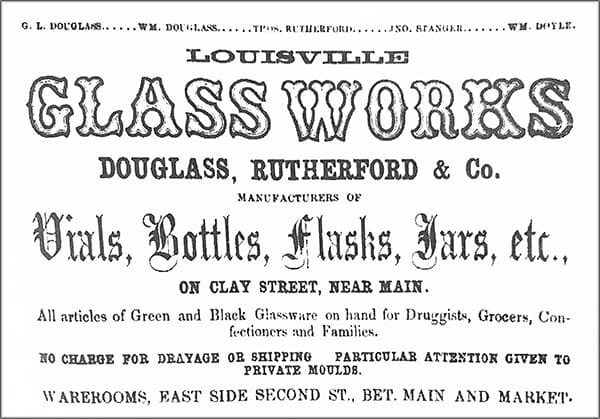
The flask was produced at the Louisville Glass Works in Louisville, Kentucky from 1860 to 1873. From 1850 to 1901, at least seven different glass manufacturing factories operated in Louisville, Kentucky. Six were utilitarian bottle houses, and the others manufactured window and plate glass. In 1850, the first glass bottle and jar-making firm, known as the Kentucky Glass Works was formed, which, by 1855, was being referred to under the name Louisville Glass Works. “Louisville KY Glass Works” is the actual wording on some of the glass works embossed whiskey and scroll flasks of the 1850s and 1860s era. This copy is also embossed on our subject flask.
In the mid-1850s, the Louisville Ky Glass Works was being run by Douglass, Rutherford & Co., replacing the previous partnership of Douglas and Taylor who used the name Kentucky Glass Works in advertising. The glass works remained on Clay Street near Main with a warehouse on the east side of Second Street, between Main and Market Streets. The partners were George Douglass, John Stanger, William Doyle, William Douglass, and Thomas Rutherford.
Primary Image: GII-114 Louisville Ky Double Eagle quart flask imaged on location by Alan DeMaison, FOHBC Virtual Museum Midwest Studio.
Support: Reference to American Bottles and Flasks and Their Ancestry by Helen McKearin and Kenneth M. Wilson, Crown Publishers Inc., New York, 1978.
Support: Reference to Louisville Glass Works by Bill Lockhart, Beua Schriever, Bill Lindsey, and Carol Serr with contributions by David Whitten
Join the FOHBC: The Virtual Museum is a project of the Federation of Historical Bottle Collectors (FOHBC). To become a member.

